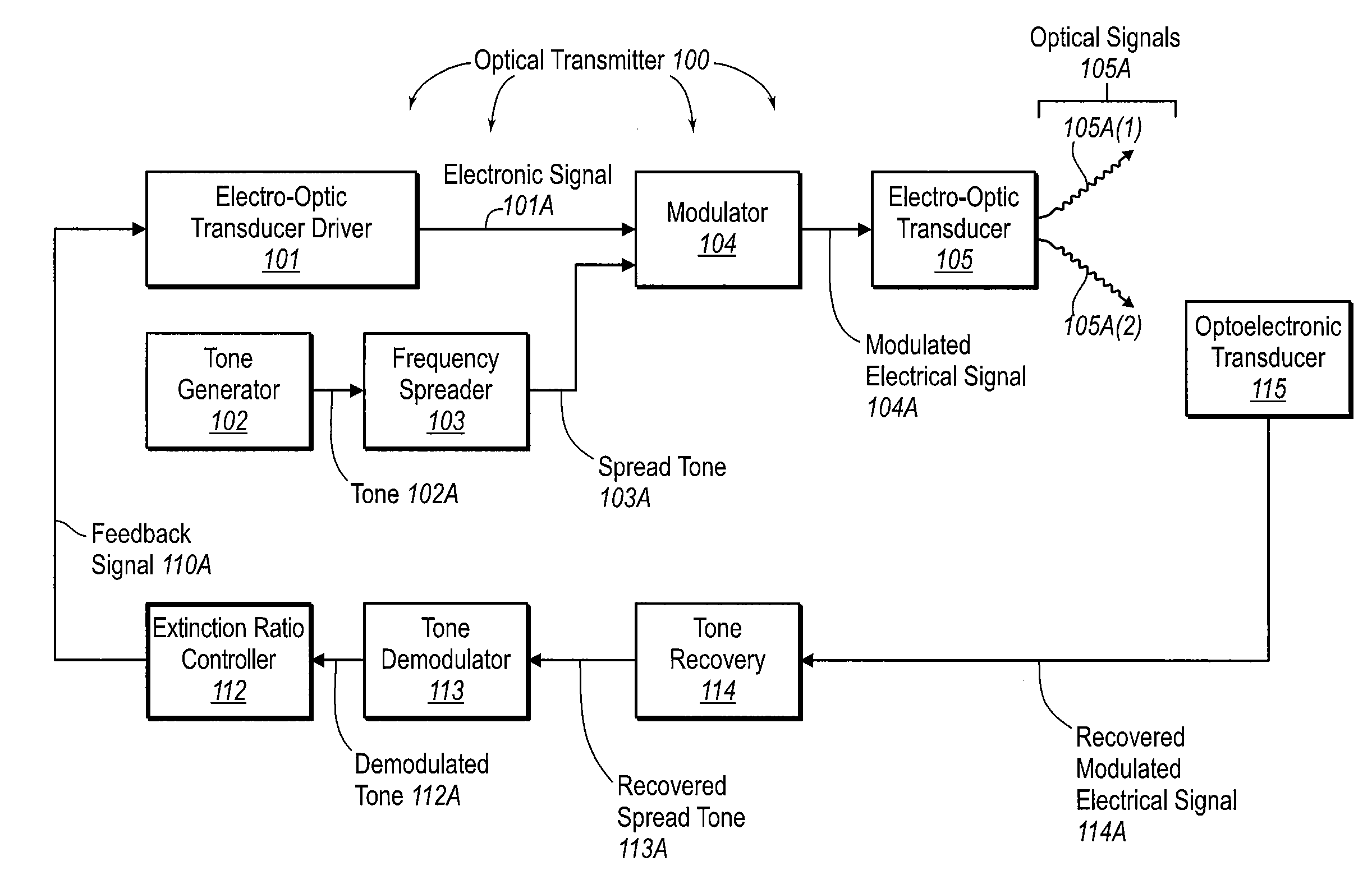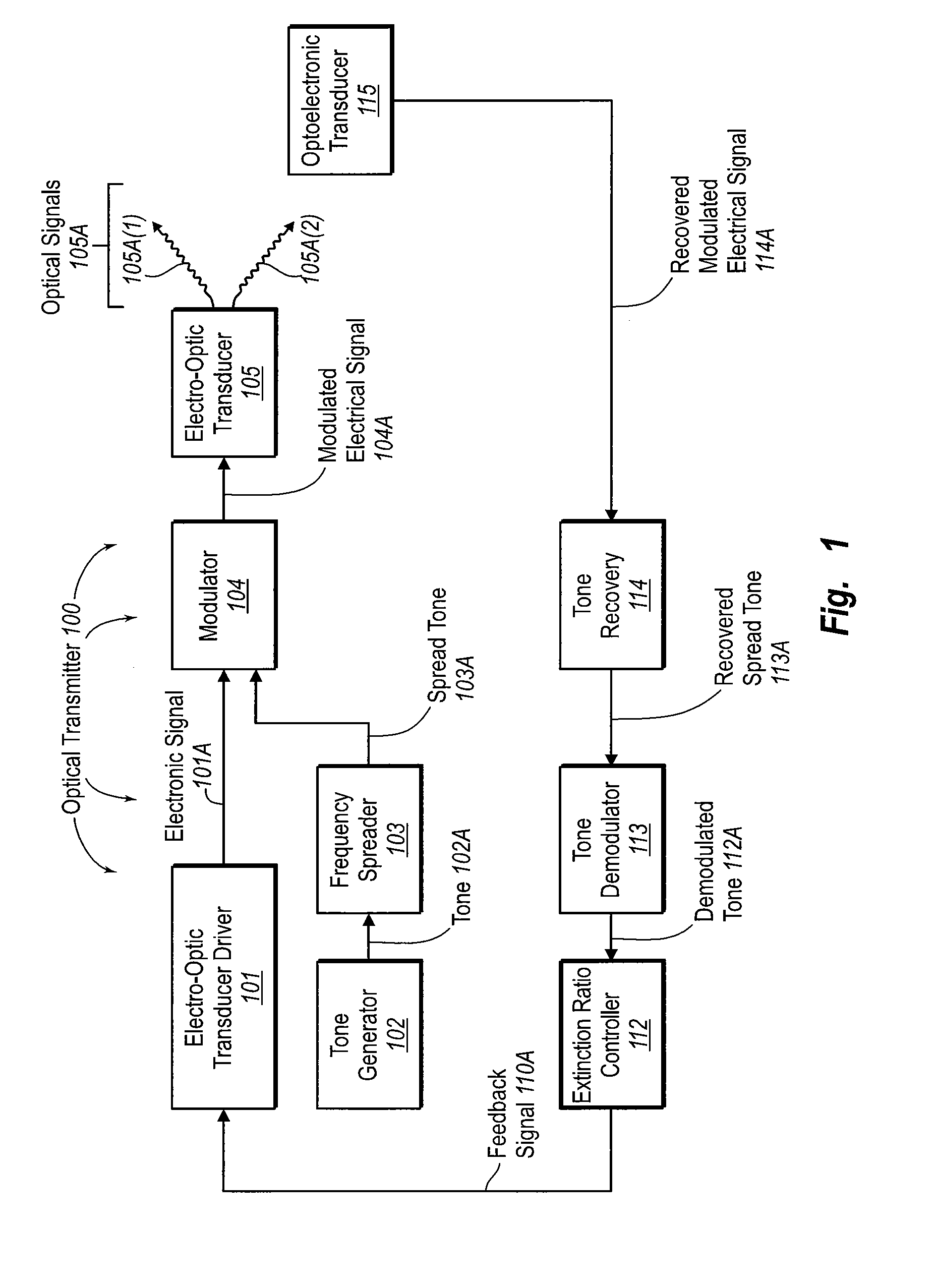Extinction ratio control using a frequency spread tone to modulate optical signal power levels
- Summary
- Abstract
- Description
- Claims
- Application Information
AI Technical Summary
Benefits of technology
Problems solved by technology
Method used
Image
Examples
Embodiment Construction
[0026]The principles of the present invention relate to an optical transmitter that controls the extinction ratio by modulating a power level of an optical signal using a frequency spread tone. By using the frequency spread tone, instead of a single tone, the tone may even be within the same frequency spectrum as the data thereby allowing for more flexibility on the frequency range of the spread tone. Furthermore, the spread tone contributes less interference to other portions of the optical transmitter that are perhaps susceptible to interference in the frequency of the tone before frequency spreading.
[0027]FIG. 1 illustrates an optical transmitter 100 in which the principles of the present invention may be employed. While the optical transmitter 100 will be described in some detail, the optical transmitter 100 is described by way of illustration only, and not by way of restricting the scope of the invention. The principles of the present invention are suitable for 1G, 2G, 4G, 10G ...
PUM
 Login to View More
Login to View More Abstract
Description
Claims
Application Information
 Login to View More
Login to View More - R&D
- Intellectual Property
- Life Sciences
- Materials
- Tech Scout
- Unparalleled Data Quality
- Higher Quality Content
- 60% Fewer Hallucinations
Browse by: Latest US Patents, China's latest patents, Technical Efficacy Thesaurus, Application Domain, Technology Topic, Popular Technical Reports.
© 2025 PatSnap. All rights reserved.Legal|Privacy policy|Modern Slavery Act Transparency Statement|Sitemap|About US| Contact US: help@patsnap.com



